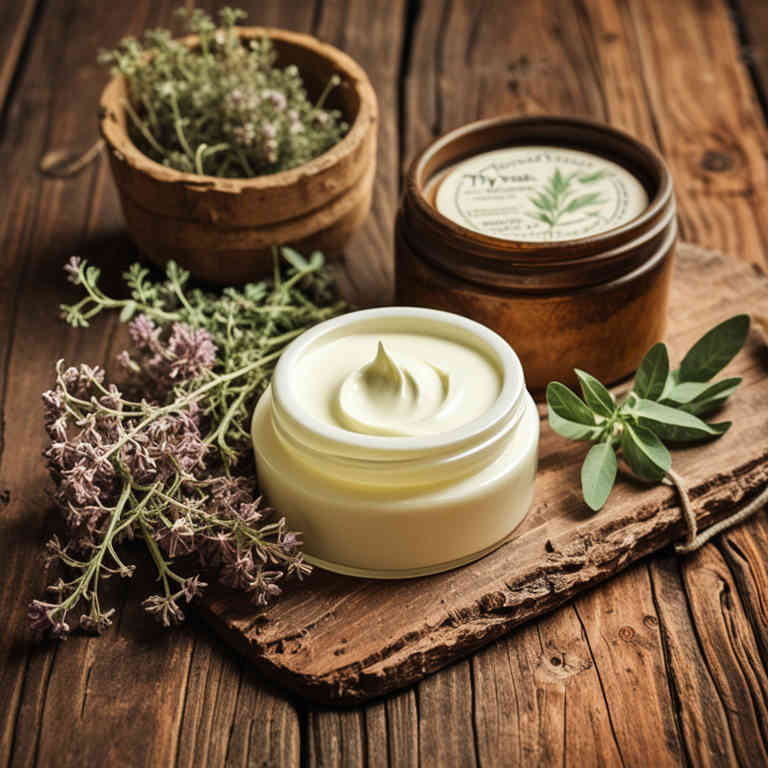Thymus serpyllum cream for medicinal use

Thymus serpyllum cream is a topical preparation made from the dried herb commonly known as wild thyme.
It is derived from the leaves and flowers of the plant, which is rich in essential oils and antioxidants. In herbalism, this cream is used to soothe skin irritations, reduce inflammation, and promote healing of minor wounds. It is often applied to treat conditions such as eczema, psoriasis, and fungal infections due to its antimicrobial and antifungal properties.
The soothing and warming effects of the cream make it a popular choice for relieving muscle pain and respiratory discomfort when applied externally.
Uses
Thymus serpyllum cream has been used to treat respiratory and skin conditions for centuries.
Historically, it was valued in ancient Greece and Rome for its antiseptic and healing properties, often applied to wounds and respiratory ailments. In traditional herbal medicine, it was used to alleviate coughs, bronchitis, and inflammation due to its thymol content. Modern applications include its use in topical formulations for its antimicrobial and anti-inflammatory effects, supporting skin health and minor infections.
Today, it is also explored for its potential in aromatherapy and as a complementary therapy for respiratory support.
Benefits
Thymus serpyllum cream has health benefits such as promoting skin healing, reducing inflammation, and enhancing immune response.
This herbal preparation is known for its antimicrobial and antifungal properties, making it effective in treating minor skin infections and irritations. It also supports wound healing by stimulating cell regeneration and improving skin texture. The essential oils in Thymus serpyllum have a calming effect, which can help alleviate stress-related skin conditions.
Overall, this cream is a natural remedy that offers a range of therapeutic benefits for both the skin and the body.
Constituents
Thymus serpyllum cream active constituents include thymol, carvacrol, and other phenolic compounds.
These compounds are known for their antimicrobial, antifungal, and anti-inflammatory properties. Thymol and carvacrol contribute to the cream's ability to soothe skin irritations and reduce inflammation. The preparation may also contain essential oils and flavonoids that support skin health and immune function.
This herbal cream is often used topically to treat minor skin conditions and promote healing.
Preparation
To make Thymus serpyllum cream, first gather fresh or dried Thymus serpyllum (wild thyme) and clean it thoroughly.
Next, infuse the thyme in a carrier oil such as olive oil by gently heating it over low heat for about 30 minutes, then allowing it to cool and strain. After the infusion, blend the infused oil with beeswax and a small amount of water to create a thick cream consistency. Pour the mixture into a clean container and let it solidify in the refrigerator.
Finally, store the cream in a cool, dark place and use it topically for its antiseptic and soothing properties.
Side Effects
Thymus serpyllum cream may lead to skin irritation or allergic reactions in some individuals.
It is made from the dried flowers of the wild thyme plant, which is traditionally used for its antiseptic and anti-inflammatory properties. The cream is often applied topically to treat minor skin infections, wounds, or inflammatory conditions. Possible side effects include redness, itching, burning, or a rash at the application site.
In rare cases, it may cause more severe allergic reactions, especially in people with known sensitivities to plants in the Lamiaceae family.